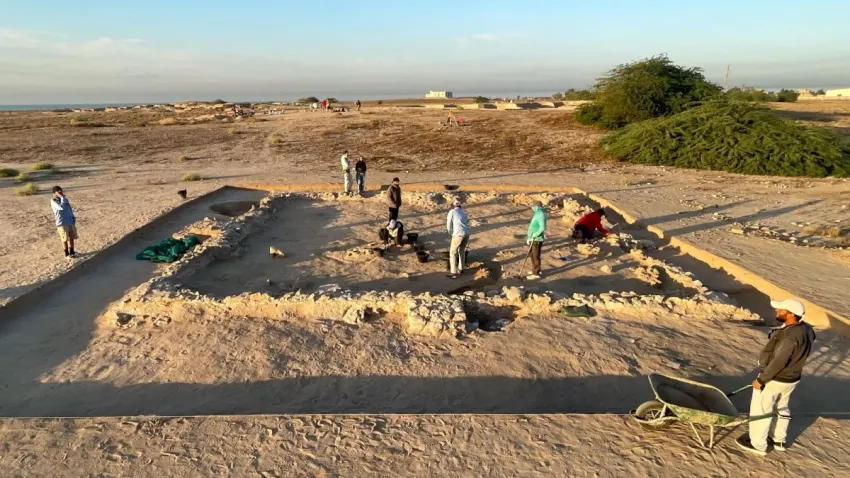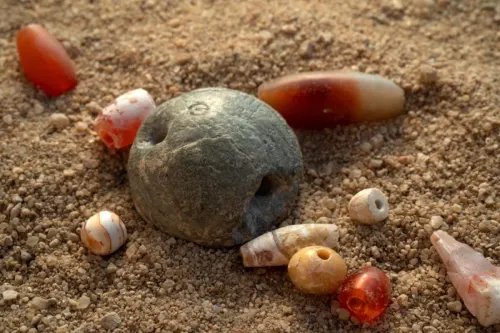A remarkable archaeological discovery has emerged from the island of Failaka in the Persian Gulf—a 4,000-year-old temple linked to the ancient Dilmun civilization. The island, once named “Ikaros” by Alexander the Great, holds a rich yet largely untold chapter of both Greek history and the ancient Near East.
Failaka: From “Ikaros” to a Cultural Crossroads
During his return journey to Babylon from his Indian campaign, Alexander the Great recognized the strategic value of an island near the mouth of the Tigris and Euphrates rivers. According to Arrian’s Anabasis of Alexander, he established a garrison on the island and named it “Ikaros”—a name that was later used for the Greek city founded there. While the name "Failaka" ultimately prevailed, it’s believed to derive from the Greek word phylakion (meaning "outpost"). The island spans approximately 24 square kilometers and is situated at the entrance to the Persian Gulf.
Over the past few decades, archaeological work has unearthed evidence of the island’s Hellenistic character, solidifying its place in Greek cultural and military history.
Discovery of a Bronze Age Temple
A joint Danish-Kuwaiti archaeological team from the Moesgaard Museum has uncovered a Bronze Age temple on the island, dating back 4,000 years. The temple is linked to the early Dilmun civilization, which flourished between 3200 and 320 BCE.
The Dilmun Civilization: A Forgotten Giant
Described in ancient texts as the “land where the sun rises” and the “land of the living,” Dilmun is one of the oldest known civilizations. It occupied the eastern edge of the Arabian Peninsula, with its heart in what is now the Kingdom of Bahrain.
Dilmun’s location made it a powerful trade hub that once controlled the commercial routes across the Persian Gulf. Despite its prominence and longevity, Dilmun remains one of the most mysterious ancient civilizations due to the limited information that has survived.
Excavating the Temple on “Hill F6”
According to Kuwait’s National Council for Culture, Arts, and Letters, the discovery was made after continuous excavations in the eastern sector of a known palace and temple complex. The new site, referred to as “Hill F6,” has now revealed the full structure of a temple measuring 11 by 11 meters.
Previous digs at this site had uncovered traces of walls, thought to be part of the same foundation as the temple. Radiocarbon dating places these remains between 1900 and 1800 BCE. Recent discoveries also include artifacts such as seals and ceramics, offering clear evidence that the temple was used by the Dilmun people—a population in eastern Arabia who spoke an East Semitic language and were active traders.
A Second Temple and a Spiritual Landmark
This newly uncovered temple lies close to other major structures from the same civilization, including the so-called “Palace” and the previously known “Dilmun Temple.” Its proximity suggests that this is the second major temple found in the region, further highlighting the area’s religious significance.
Dr. Stefan Larsen, head of the Danish archaeological mission in Kuwait, emphasized the significance of the find, calling it a “breakthrough in understanding the spiritual practices of the region.”
A Religious and Administrative Hub
Speaking to Kuwait Times, Dr. Hassan Ashkenani—Professor of Archaeology and Anthropology at Kuwait University—noted that the temple’s location near a large administrative building indicates the site once functioned as both a religious and governing center of the ancient Dilmun kingdom.
Kuwait’s Council for Culture, Arts, and Letters confirmed in a press release that the archaeological team has successfully completed its 2024 research season, following up on work conducted during the 2022–2023 period.
A Glimpse into the Past
Collection of Gemstones Unearthed During Excavations
Photo: Kuwait News Agency (KUNA)
The temple’s discovery not only sheds light on the enigmatic Dilmun civilization but also reconnects us with the island’s layered history—from its Hellenistic renaming by Alexander the Great to its ancient role as a spiritual and trade hub. As research continues, Failaka may yet yield more secrets, further enriching our understanding of early civilizations at the crossroads of East and West.








